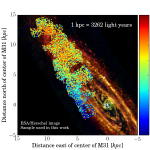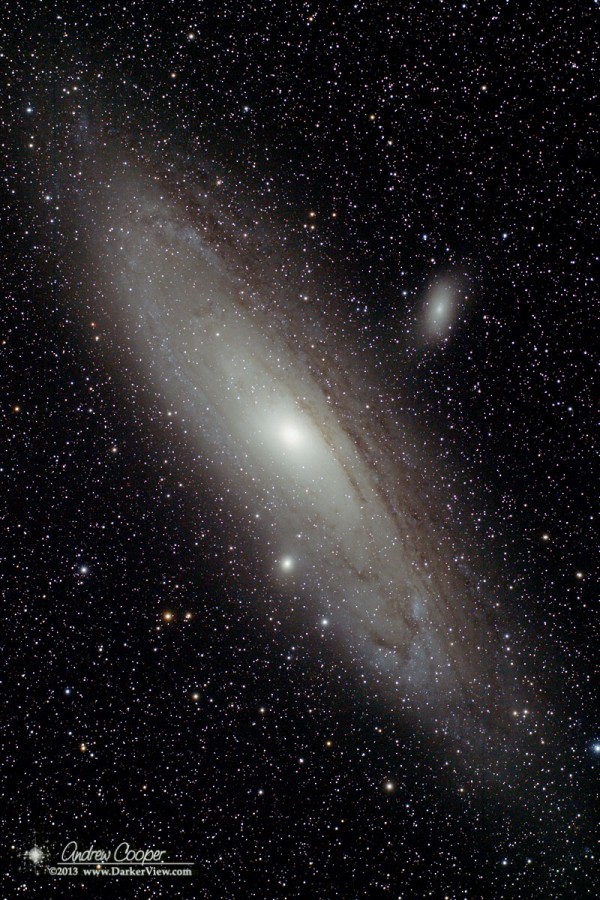W. M. Keck Observatory press release…

The structure and internal motions of the stellar disk of a spiral galaxy hold important keys to understanding the galaxy’s formation history. The Andromeda galaxy, also called M31, is the closest spiral galaxy to the Milky Way and the largest in the local group of galaxies.
“In the Andromeda galaxy we have the unique combination of a global yet detailed view of a galaxy similar to our own. We have lots of detail in our own Milky Way, but not the global, external perspective,” said Puragra Guhathakurta, professor of astronomy and astrophysics at the University of California, Santa Cruz.
The new study, led by UC Santa Cruz graduate student Claire Dorman and Guhathakurta, combined data from two large surveys of stars in Andromeda conducted at the Keck Observatory in Hawaii as well as data from the Hubble Space Telescope.
Continue reading “Comprehensive Andromeda Study Hints of Violent History”

